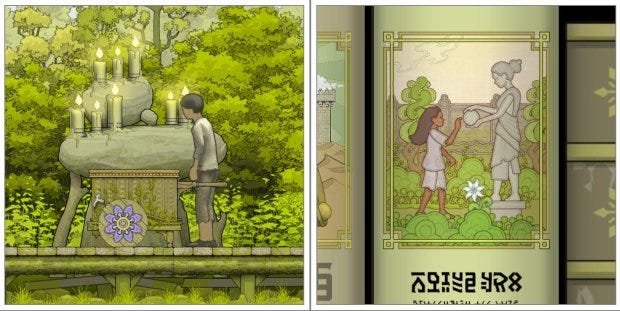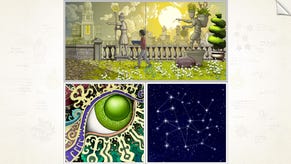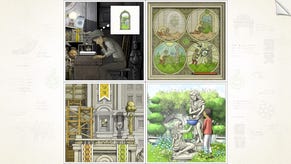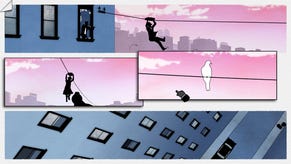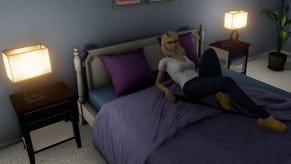Interview: Jason Roberts on Gorogoa, brevity and unknowability
Peering through
We've been following the development of mind-bending, reality-warping, picture-based puzzler Gorogoa for five years, since it was first revealed in 2012. It then went on to win an IGF Award in 2014, despite being unfinished. And now, finally, it's here. And as our review says, it's magnificent. We spoke to lone developer Jason Roberts about the long development, the process of what to leave out, and how unknowability was woven into the fabric of the game.
RPS: Can you believe you've finished the game? Has that sunk in yet, after so many years?
Jason Roberts: No, I wouldn't say it's sunk in. My mind is slow to absorb change. But no matter the inevitable anxiety surrounding the release, there's a deep satisfaction under there somewhere. In the same way the story in the game needed to feel whole, the story of the game needed closure as well.
RPS: In 2014, when the game won the IGF award, you told us it would have to be out that year because "the money runs out this year". How did you manage to keep going for another three years?
Roberts: I was extremely fortunate in that regard. I first got support from the good people at Indie Fund, and then when that money started to run out, Annapurna came to the rescue and was a huge help financially and logistically, allowing me the time and resources to finish the game as I wanted to see it.
RPS: Along with so much brand new stuff, there are a lot of moments that we saw in the earlier builds and demos that haven't made it into the final game. What was your process for deciding what you kept? And how many puzzles did you lose along the way?
Roberts: I've never been shy about cutting stuff from the design, even things I've put a lot of work into. Every part has to serve the whole, the pacing has to feel right, the puzzles have to feel good and be varied and interweave with the story. Balancing these constraints forced a lot of cuts over the years. Over and over, I'd make one design change, and that change would have ripples that would force other changes throughout the game. Puzzles in the demo were dropped from the design not because I didn't like them, but because there was no longer a place for them.
At this point, to me, the original demo is almost separate work. Some day I hope to remaster that original version and get it working in the new engine, and make it available if I get the sense people are interested. We'll see.
RPS: As I played the game, I found myself suspended in this peculiar place between understanding and not understanding the process. Almost deliberately, as if my thinking too hard about a puzzle was going to make it harder to solve. Was this a deliberate aim of the game, to create this almost dreamlike sensation of play?
Roberts: The game was at its most dreamlike in the original 2012 demo, and many people who were fans of the demo expressed love for that very quality. Still, I soon found that a little more structure was required to extend the length of the game. That loose and surreal feeling is appealing in the short run, but after a certain point it becomes first disorienting and then frustrating. So I worked to add more coherence to both the story and puzzle design. I wanted there to be some sense of achievement and at least partial comprehension for the player along the way.
At the same time, strangeness and a sense of elusive meaning were qualities that people valued about the original demo. I had to be careful not go too far in the opposite direction. The design is therefore a careful balance that attempts to avoid frustration and reassure the player that there is underlying meaning, while also preserving mystery and the right kind of disorientation. I worked very hard to ensure there is meaning woven into every part of the game, but I'm careful also about the ways that meaning is revealed. There are things that are unknowable, and a story that touches on those themes should preserve some of that unknowability.
RPS: When building puzzles like Gorogoa's, does the process ever become as ethereal and uncanny as the experience of solving them? Or is there a clean, clear logic behind the scenes when building?
Roberts: A certain amount of logic has to enter into the design at some point, since most of the puzzles in the game have to be very carefully thought out and fit within pretty tight tolerances. But I do try to open myself to the more ethereal in the early part of the design process, for the game as a whole and for each section and puzzle individually. Trying to bridge that gap between ethereal inspiration and logical structure was perhaps the biggest challenge.
RPS: I found the length to be just perfect. But at the same time, I imagine it must be nerve-wracking to put out a two-hour game. How much thought did you give to the game's length, and whether people would come away satisfied?
Roberts: I'm very happy the game isn't longer. I've had a game that was about two hours long for maybe the last two years, and have spent the time since refining that two hour game rather than extending the length. Everyone will have to trust me that that was the right choice. Although of course I know not everyone will.
My point is, the length isn't merely the result of limited resources. It was very important to me that every scene in the game have a legitimate reason to exist within the narrative - at least in my own mind - while simultaneously functioning as a piece of a puzzle. When designing a puzzle game, the impetus is often to add as many puzzles as possible. But when telling a story, the impetus is on economy, on using as few scenes as possible and discarding the unnecessary ones. And this was not a game where the story and gameplay could be controlled with separate dials. The game is a carefully structured fable, and including more scenes purely for the sake of gameplay would've broken that structure.
I hope that means something to people. I hope it feels right.
RPS: Thanks for your time.
